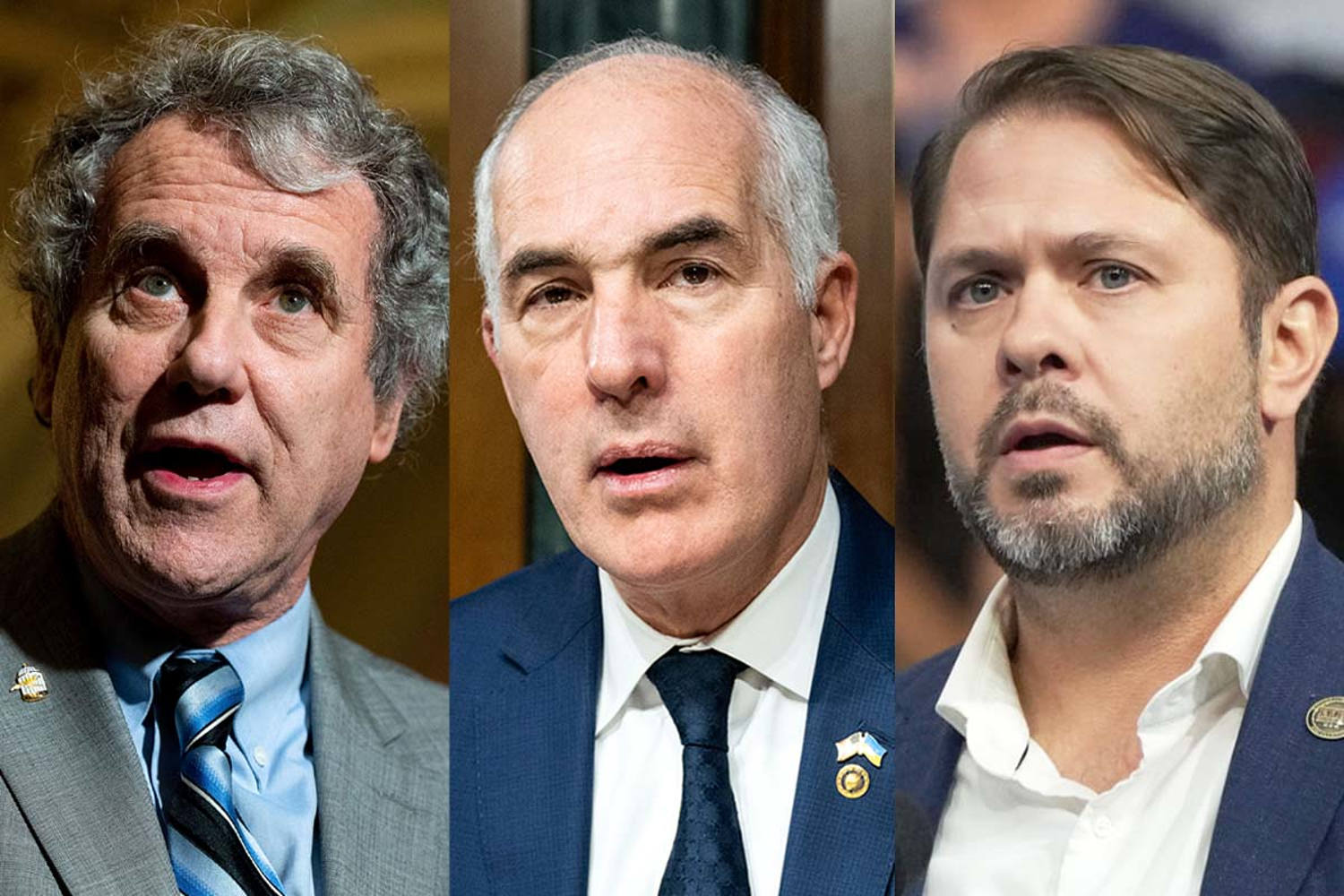
New fundraising reports detail just how much Democrats in competitive congressional races benefited from a wave of cash that flooded campaigns after Vice President Kamala Harris ascended to the top of the party’s ticket, leaving Republicans scrambling to stretch their money in the election’s final weeks.
Democratic House and Senate candidates raised eye-popping sums from July through September, according to new reports filed with the Federal Election Commission. They didn’t just outraise their GOP opponents — they swamped them.
On average, Democratic candidates raised more than twice as much money as Republican candidates in the third quarter in Senate and House races the Cook Political Report with Amy Walter rates as competitive. Democrats outraised Republicans in all 11 competitive Senate races and in all but one of the 26 “toss-up” House races.
In some cases, the gap was even wider. Three Senate Democratic candidates — Ohio Sen. Sherrod Brown, Maryland’s Angela Alsobrooks and Michigan Rep. Elissa Slotkin — raised more than four times as much as their Republican opponents during that period.
The fundraising boon also allowed Democrats to vastly outspend their GOP opponents in key races from July through September. Senate Democratic candidates spent a combined $244 million to Republicans’ $91.5 million. And House Democratic candidates in races rated as “toss-ups” or “leaning” toward one party spent $132 million to Republicans’ $61.6 million.
In the fight for the Senate, candidates from both parties in the top races ended September roughly even in cash on hand — Democrats had a combined $47.5 million left in their campaign accounts, while Republicans had $44.8 million. That gap was wider in competitive House races, with Democrats ending the quarter with a combined $80.8 million on hand to Republicans’ $59.2 million.
The GOP needs a net gain of just one seat to take control of the Senate if former President Donald Trump wins the White House (since the vice president casts tie-breaking votes) or two if Harris is elected. The battle for the House is also tightly contested, as Democrats need a net gain of four seats for a majority.
Republicans have been sounding the alarm about their candidates’ fundraising, particularly since Harris became the Democrats’ de facto presidential nominee. And they have tried to combat Democrats’ financial advantages by utilizing different avenues to stretch their candidates’ limited funds.
Both the National Republican Senatorial Committee and the National Republican Congressional Committee have been using so-called hybrid ads, a tactic the NRSC began deploying more aggressively in the 2022 midterm elections. For these spots, the committees split the cost of an ad with the candidate, allowing the ad to be purchased at a lower candidate rate rather than the pricier rate for an outside group alone. But the substance of the ad must include national themes in addition to the specific candidates.
So while this strategy places limitations on the content of these ads, Republicans don’t view that as a problem as they have been working to nationalize these down-ballot races.
Democrats have also been deploying hybrid ads, but Republicans in particular see the tactic as one way to help their candidates combat the Democratic onslaught. That money can still only go so far, since candidates still have to shoulder some of the cost of these spots.
Senate Republicans have also been using a new tactic to help their candidates counter Democratic messaging on the airwaves. They have leveraged joint fundraising committees, or groups that allow multiple candidates or groups to fundraising through one entity, with those committees launching ads that include a fundraising solicitation.
Democrats sought to block this tactic by asking the FEC to weigh in. The panel deadlocked on the issue last week, allowing the practice to continue, raising concerns among Democrats who are bracing for a late influx of GOP money in these races.
“This is going to basically increase the amount of money that [is] going to go into our elections this cycle, but forever,” Slotkin, the Democratic Senate nominee in Michigan, told NBC News in an interview last week. “Basically, it’s gross. And Democrats have the advantage with small dollar campaign donations. The Republicans have more billionaires and millionaires. … So it really cuts at our advantages on TV.”
But Democrats signaled that they could also use the tactic to launch their own ads.
“Unlike Republicans, the [Democratic Senatorial Campaign Committee] and Senate Democrats’ campaigns asked for clear guidance from the FEC on this practice, which the FEC failed to provide, said DSCC spokesman David Bergstein. “Moving forward the DSCC is committed to ensuring our campaigns do not operate at a disadvantage in the closing weeks of the campaign and will utilize the same tactics that are being employed by Republicans regarding joint committee advertising.”
And while candidates and campaign committees are battling it out on the airwaves, super PACs are also dropping millions of dollars in the battle for Congress.
Senate Majority PAC, the main Democratic outside group for Senate races, reported raising a whopping $119 million in the third quarter. Its largest single donation of $5 million came from financial strategist Michelle Chan, while other prominent Democrats, including Illinois Gov. J.B. Pritzker, donated to the group.
Its GOP counterpart, Senate Leadership Fund, raised $116 million, including contributions from several Republican megadonors such as Ken Griffin, Paul Singer and Steve Schwartzman.
Congressional Leadership Fund, the main GOP super PAC involved in House races, pulled in $81.5 million from July through September, with contributions from megadonors Tim Mellon and Miriam Adelson.
Its Democratic counterpart, House Majority PAC, opts to file its fundraising reports each month rather than quarterly. The group raised a combined $31.6 million in July and August, boosted by funds from former New York City Mayor Michael Bloomberg, and must file its September report by Sunday.



